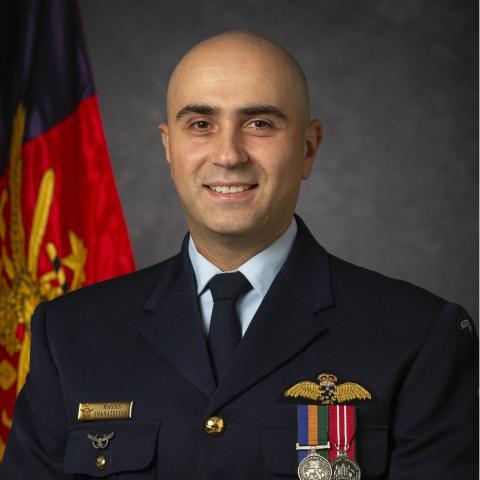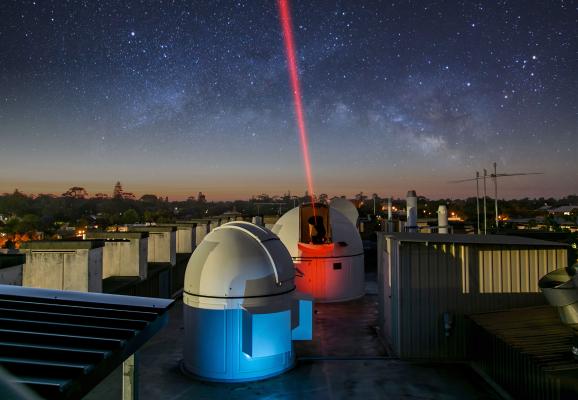An eye on the sky
From a young age, Squadron Leader (SQNLDR) Rayan Gharazeddine has been captivated by the mysteries of space.
“My initial inspiration stemmed from my father's passion for astronomy and science,” SQNLDR Gharazeddine says. “He frequently shared his extensive collection of books on the topic with me, and we would often use his binoculars to observe the night sky together.”
Wanting to find an entry into the space industry, SQNLDR Gharazeddine studied a Bachelor of Science specialising in Physics and Mathematics at Monash University
At that time, opportunities in the Australian space industry were less common, but on joining the Australian Defence Force (ADF), SQNLDR Gharazeddine found his place within the space domain, making real-life contributions to the nation’s interest in the No.1 Space Surveillance Unit (1SSU).
Exploring the space domain
In 2010, SQNLDR Gharazeddine joined the Royal Australian Airforce (RAAF) as a P3 - Orion Navigator and spent the next few years flying operational missions around the world. Having demonstrated a passion for space throughout his career, SQNLDR Gharazeddine transitioned from aviation into a space-related role at the Australian Space Operations Centre (AUSSpOC).
“The four years I spent at AUSSpOC allowed me to develop my space knowledge at the operational level, becoming proficient in the application of space effects and gaining expertise in Space Domain Awareness, Navigation Warfare and Space Weather”, he says.
Following his time at the AUSSpOC, SQNLDR Gharazeddine continued his space career with the No.1 Remote Surveillance Unit (1RSU). Here, he managed a team utilising C-Band Radar, Space Surveillance Telescope and Missile Warning capabilities, before moving to the newly established No.1 Remote Space Surveillance Unit as the first Executive Officer.
Scientific opportunities at the ADF
SQNLDR Gharazeddine recalls many significant milestones in his ADF career, with his scientific background playing a key role.
“I played a major part in the establishment of the Orbital Analysis section at the Australian Space operations Centre (AUSSpOC). At the time, the unit provided me with latitude to use my science background to build a unique capability. With little direction and limited known processes, I was able to set up the framework and mature it to a level capable of generating tangible effects during operations,” he shares.
SQNLDR Gharazeddine has also been supported to build and test rocket technologies that may serve a future purpose in the ADF.
A career highlight though, was his direct involvement in establishing the No.1 Space Surveillance Unit, ensuring a smooth transition of the space capabilities from Air Command to Space Command.
Throughout his career, SQNLDR Gharazeddine says he has drawn inspiration from several subordinates, supervisors and colleagues who work in the space domain. “I have had the privilege of working with people who are highly motivated, scientifically curious and are determined to make this endeavour success whilst recognising the challenges that lay ahead.”
Looking to the future, SQNLDR Gharazeddine notes that many specialists will be required to design and build high-end space technologies in Australia, supporting the nation’s ability to meet emerging global and human challenges.
Career journey timeline
2002 – 2005
Studied Bachelor of Science.
2005 – 2009
Worked as a business manager at an energy corporation.
2010 – 2011
Joined the Royal Australian Air Force - Officer and Flying Training.
2012 – 2015
P3-Orion Navigator/Tactical Co-ordinator – 11 Squadron.
2016 – 2017
2016 – 2017 Airborne Instructor – School of Air Warfare.
2018 – 2021
Orbital Analyst and Space Operations Officer – Australian Space Operations Centre.
2022
Deputy Flight Commander (Space) – No.1 Remote Sensor Unit.
2023 – Present
Executive Officer – No.1 Space Surveillance Unit




